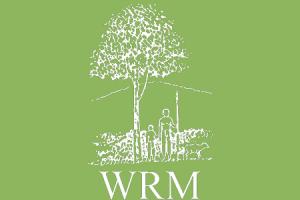Between 1990 and 2002 the global planted oil palm area increased by 43%. Most of this growth occurred in Indonesia and Malaysia. In Indonesia, between 1990-2000, the total area planted with oil palm almost tripled from 1.1 to 3 Mha (million hectares). In 2002, overcoming the 1997-1999 financial crisis, the total mature oil palm plantation area reached 3.5 Mha. Assuming recent planting rates, the total area of oil palm plantations in Indonesia is set to increase to 11.2 Mha in 2020.
Indonesia
Bulletin articles
29 June 2004
Pulp mills’ extremely large scale makes it necessary for them to simplify under a central authority not only landscapes, biological diversity and genetic diversity, but also political systems. The sheer size of the mills and the landscape they reorganize around them means that to survive, they need constantly to attract subsidies, stimulate demand – and above all, control resistance, both from ordinary people and from the landscape.
Other information
3 June 2004
In the early 1980s the Indonesian government launched an ambitious forestry plan entitled "Industrial Timber Plantation (HTI) and Pulp Industry Development." In the early stages of its development, pulpwood plantations were claimed to rehabilitate degraded land and to reduce the pressure on natural forests. This misleading propaganda was indeed intended to disguise an ambitious plan of the Indonesian government for the country to become a world major pulp and paper producer.
Other information
4 April 2004
Indigenous communities have been practicing sustainable community-based ecosystem management for centuries. These systems incorporate local knowledge and beliefs that are based on the wisdom and experience of past generations. They also contribute to the economic well being of local communities, as well as to the well being of the Indonesian nation.
Bulletin articles
11 March 2004
Komodo National Park (KNP) was established by the Government of Indonesia in 1980 to protect the habitat of the unique giant lizard Varanus komodoensis, called Komodo dragon. In 1995, the central government invited the US-based organisation, The Nature Conservancy (TNC) to co-manage the park.
Other information
12 February 2004
This article highlights the vulnerability of dam-affected peoples -especially women- being displaced from their homes and lands, and relocated elsewhere. Due to the need to clear forests and divert the river, dams can effectively deprive those in the way of dams of rights to their traditional resources. It highlights some dam-related issues which are apparently shared the world over. But first some examples of on-going and completed dam projects in Malaysia, to show the price tag for 'development':
Other information
12 February 2004
Inland aquaculture has been practiced in Asian countries, namely in Indonesia, China, India and Thailand for hundreds of years. Shrimps were traditionally cultivated in paddy fields or in ponds combined with fishes, without significantly altering the mangrove forest, which for centuries has been used communally by local people providing them a number of products such as commercial fish, shrimp, game, timber, honey, fuel, medicine. Women have played a key role in taking the advantage of mangrove resources. In Papua Island, indigenous knowledge regulates woman’s role in mangrove forest.
Other information
12 February 2004
More than 35 % of Indonesian upland territory has been licensed as mining concessions, of which 11.4 million hectares is located within protected areas. However, the mine sector’s contribution to the Indonesian government’ s net income is only 2% -4%. The amount is unequal to the impacts caused by the sector toward local people and the environment across the Indonesian archipelago.
Bulletin articles
12 February 2004
In Indonesia, the western part of Java -Halimun- is well known by its high biodiversity and cultural richness. In terms of community-based forest resource management systems, indigenous and local peoples of Halimun possess centuries of farming and knowledge about the tropical rainforests. They utilize the surrounding forest and land for various uses in models of swidden cultivation (huma), rice field (sawah), garden (kebon), mixed tree garden (talun) and various types of forests (such as Leuweung Titipan, Leuweung Tutupan and Leuweung Bukaan).
Bulletin articles
12 February 2004
The Center for International Forestry Research has implemented a program called Adaptive Collaborative Management of Forests (ACM) for more than five years. At its most extensive, we worked in 11 countries (Nepal, Indonesia, Philippines, Kyrgyzstan, Malawi, Cameroon, Zimbabwe, Ghana, Madagascar, Bolivia and Brazil); and activities continue in eight. One of the striking elements of this work has been our success at involving women (and other marginalized groups) in our work with communities.
Bulletin articles
13 December 2003
With more than a year into its construction, the controversial US$1.2 million Ladia Galaska road network project will link the west coast of Aceh with the eastern coast of northern Sumatra. Over 90 kilometers out of the planned 505-kilometer-long road cuts through the relatively pristine forest of the central highlands at the Leuser national park, and this would have notorious permanent negative impacts on the environment.
Other information
19 August 2003
The Kayan Mentarang National Park situated in the interior of East Kalimantan, Indonesian Borneo, lies at the border with Sarawak to the west and Sabah to the north. With its gazetted 1.4 million hectares, it is the largest protected area of rainforest in Borneo and one of the largest in Southeast Asia.
